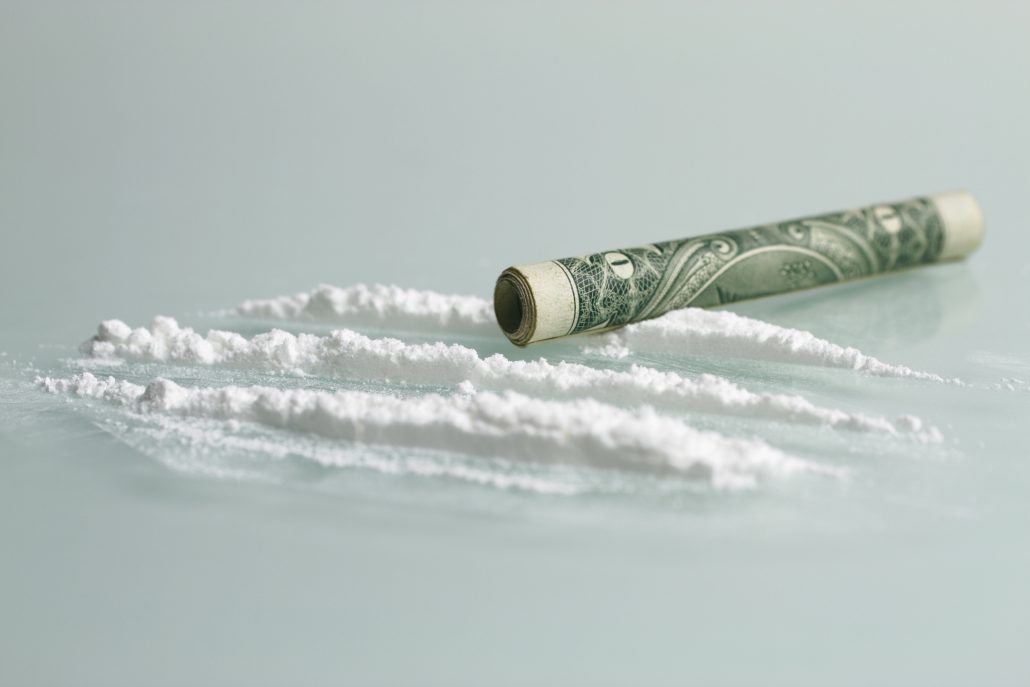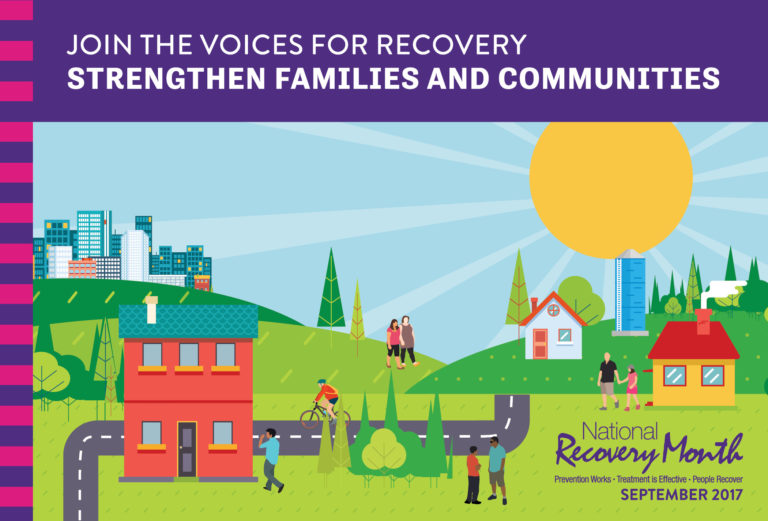by Justin Mckibben | Jan 9, 2018 | Addiction Stigma, Drug Abuse, Opioids, Prescription Drugs, Professionals, Stigma

(This content is being used for illustrative purposes only; any person depicted in the content is a model)
The opioid crisis has affected every community in America. Opioids affect rural working class people, those in the inner city and suburbs, or even the wealthy and well-to-do professionals. While drug abuse in business has been highlighted in blockbuster films like the Wolf of Wall Street, the current reality is not far from it. According to addiction experts, substance use disorder is making a sobering impact on the financial industry.
This comes from not just an upscale partying lifestyle, but also from drugs used to manage performance and stress, along with physical pain. According to addiction experts, the financial industry itself is actively turning a blind eye to the issues concerning opioid abuse on Wall Street because money is still the priority, and stigma still gets in the way.
Opioids on Wall Street: White-Collar Confessions
As it stands there is no comprehensive research that takes a detailed look at opioid abuse in Wall Street among finance professionals. So we can’t exactly show the numbers to prove it’s prevalence. However, what we see consistently is a dramatic increase in addiction and overdose rates all over the nation in recent years.
Luckily, professionals from this demographic are beginning to speak out in hopes of progressive change.
One such individual is Trey Laird, a former Wall Street trader, who recently spoke to CNBC about his six-year opioid addiction. During the conversation Laird reiterates the critical understanding that substance use disorder can reach anyone, saying:
“Addiction pervades every single socioeconomic demographic that there is. Every industry, every race, men, women. It doesn’t care who you are,”
After getting clean himself, Laird went on to open a sober living community and says he hopes to specifically serve the Wall Street and white collar demographic.
According to Laird, there has been more talk about opioid addiction among people in higher socioeconomic brackets, but there is still much work that needs to be done. He acknowledges that increasing awareness is doing a great deal, but that the problem is also at an increase. Wall Street may finally be talking about it, but how many professionals will get the help they truly need?
Opioids on Wall Street: Stocks and Stigma
One of the biggest obstacles facing white-collar workers like those in Wall Street is the engrained stigma still attached to addiction. Even with all the shifts in our culture toward a better understanding of substance use and the compassion for those struggling, professionals still have this seemingly unbearable hurdle in front of them.
Truthfully, stigma is something that prevents most people from getting help. Professionals will often be too afraid of losing their jobs to admit they need help. Many in the world of Wall Street and finance may have no information on how to seek out treatment while adhering to their professional boards’ guidelines and business practices.
With white-collar workers, this may be an especially difficult thing because the idea of addiction is so often attached to stereotypes of the unemployable, the homeless, the unreliable and unstable that their high-earning careers might minimize the impact drugs have on their lives. Wall Street stockbrokers and traders might not see themselves as having a problem as long as they can function, which brings in the idea of the “functioning addict.”
Opioids on Wall Street: Function Addiction is Still Addiction
Many white-collar workers who struggle with drugs or alcohol may consider themselves a “functioning addict”, meaning they are less likely see their actions as a problem because they are able to maintain their professional or even personal lives. To make matters worse, frequently the people around someone who is professionally successful will not believe the addiction is real. They may admit that you’ve been careless or destructive in some respects, but will ultimately minimize it due to your financial stability.
As long as you’re making money and paying the bills how could you possibly be “that bad?”
Well, because “functioning addiction” is still an addiction.
Addiction isn’t about whether or not you are able to hold down a steady income. It does not depend on whether or not other people recognize that you have a problem or your competence with your profession. While addiction can and will have an impact on these things, it isn’t always as black and white as most people like to pretend.
Notice how earlier we said you may “maintain” other areas of your life? Well, we mean to say that you can get by for a while, but eventually, the effects of addiction will catch up with you. It could be in the form of serious health consequences or other devastating circumstances. It could take days, months or even years, but it will leave a mark.
Sadly, “functioning addicts” are also far less likely to get the help they desperately need.
Opioids on Wall Street: It Could Be You
While you might be able to keep your addiction secret, in the beginning, things will eventually get worse. Eventually, your addiction will become unmanageable.
If you think you might fit the “functioning addiction” criteria, look at the following questions and answer them honestly.
- Do you often think about using drugs or drinking?
- Do you find it hard to stop after you start drinking or using?
- Are you scheduling your time around drinking or using drugs?
- Have you tried to stop before, but found that you were unable to?
- Do you drink or use drugs first thing in the morning?
- Are you drinking or using drugs at work?
- Do you hide your drug use or drinking?
- Have you done something risky, like driven drunk?
- Do you worry about your drug use or drinking?
If you find you are answering “yes” more than “no” then you should seriously consider speaking with a medical or addiction professional about your drug use or drinking.
The opioid crisis is nothing to be ignored. Despite all that we think we have learned about addiction too many professionals don’t get the help they need. No one is exempt from the destruction of addiction. Opioids don’t care what street you work on, Wall Street or not, they can ruin your life all the same. If you or someone you love is struggling, please call toll-free now. We want to help.
CALL NOW 1-888-922-5398
by Justin Mckibben | Nov 7, 2017 | Cocaine, Drug Abuse, Recovery, Stimulants

While the opioid crisis in America has reached public health emergency proportions, we still have to remember that there are a lot of other extremely dangerous drugs out there. Cocaine is a drug that has been around for a very long time, but with the rise in heroin and prescription drug abuse, people may have this idea that cocaine is no longer a real threat.
However, cocaine is still very dangerous and very prevalent around the world and here in the United States.
So how well do you know this drug? What do you know about its history? Do you know about the most common health risks?
Here are 25 facts about cocaine you probably don’t know.
Random History
-
Karl Koller (1857-1944)
This Austrian ophthalmologist experimented with cocaine as an anesthetic. The most infamous accounts are of Koller applying the drug to his own eye and then pricking it with needles.
-
Nervous Stimulant
Cocaine is the most powerful central nervous stimulant found in nature. The drug often gives users feelings of alertness, energy and even power.
-
Commercial Cocaine
In 1885, a U.S. manufacturer sold cocaine commercially. They advertised that cocaine would “make the coward brave, the silent eloquent, and render the sufferer insensitive to pain.”
Side note- The manufacturer even included a syringe in the packaging.
-
Drugged on the Job
According to some historians, white business owners in the early 1900s would encourage their African-American employees to use cocaine in order to boost their productivity.
-
First Addicted Physician
In 1884, famous American physician William Stewart Halsted performed the first surgery using cocaine as an anesthetic.
Side note- he shortly afterward became the first cocaine-addicted physician on record. Surprising?
-
Powdered Money
According to one study, trace amounts of cocaine can be found on 4 out of every 5 dollar bills. However, cocaine is a fine powder and is easily spread around, meaning the bill wasn’t necessarily used as a snorting straw.
-
Nazi Addicts
Historians say that Hitler was addicted to cocaine, among many other drugs including methamphetamines. Nazis often used drugs as a means of stimulation. Many believe all those stimulants helped ignite his ranting paranoia.
Prevalence
-
Second Most Popular
Cocaine is the second most commonly used illicit drug in the United States. The first is marijuana.
-
Emergency Visits
In 2004-2007 cocaine overdose caused 31% of visits to the emergency room.
-
First Timers
Every day, 2,500 Americans try cocaine for the first time.
-
Worldwide
Over 200 million people use illegal drugs worldwide. 21 million of those people use cocaine.
-
American Addiction
Even though the United States only makes up less than 5% of the world’s population, the country consumes approximately 37% of the world’s cocaine.
-
Illicit Industry
The illicit cocaine industry earns between $100 and $500 billion each year.
-
Scotland Snorts
Scotland has the highest cocaine use out of any other country in the world. One out of every 40 Scots uses cocaine, which is approximately 2.4% of the population.
-
Babies Born Addicts
Every year in the United States more than 400,000 babies are born already addicted to cocaine.
Health Risks
-
Fast-Acting Addiction
An estimated 10% of all people who begin using cocaine will immediately progress to serious, heavy.
-
Sharing is Hurting
Sharing straws to sniff cocaine can actually spread several blood-borne diseases, including hepatitis C.
-
Mental Health
Cocaine users tend to have higher rates of certain mental health conditions, including:
When compared to the general population.
-
Perfect for Heart Attacks
Come describe cocaine as the “perfect heart attack drug” because it causes so many harmful effects, including:
- Increased blood pressure
- Stiff arteries
- Thickening of heart muscle walls
Even worse is that these irregularities persist long after the effects of cocaine have worn off, even for those who aren’t chronic users.
-
Bruxism
Chronic cocaine use can cause a condition called bruxism, which is grinding of the teeth involuntarily.
-
Drug-Induced Decay
Cocaine frequently causes dehydration and dry mouth. This leads to many users having less saliva in their mouth, which can then lead to tooth decay.
-
The Nose No’s
Cocaine can also destroy the cartilage separating a person’s nostrils after continued use.
-
Deadly Influence
The direct pharmacological effects of the cocaine are often only credited with 1/3 of the deaths associated with cocaine use. The majority of deaths in connection with cocaine are by:
- Homicide
- Suicide
- Motor vehicle collisions
Meaning a lot of people die as a result of the mind-altering properties of cocaine and risk behaviors associated with the drug.
-
Lethal Mix
Consuming cocaine with alcohol is one of the deadliest drug combinations there is.
Now you may be wondering… what is the last fact going to be? You might get through this list knowing less than you expect about the powerful illegal stimulant…
NUMBER 25…
You can quit because there is help for you. Cocaine addiction can be crippling and feel impossible to overcome. But with safe medical detox, followed by effective and holistic treatment options, you can build a lasting foundation for recovery from cocaine addiction.
Palm Healthcare Company takes pride in offering comprehensive and innovative treatment options to help individuals create a personalized recovery plan. If you or someone you love is struggling, please call toll-free now. We want to help.
CALL NOW 1-888-922-5398
by Justin Mckibben | Sep 5, 2017 | Drug Abuse, Drug Policy, Heroin, LSD, MDMA

(This content is being used for illustrative purposes only; any person depicted in the content is a model)
For anyone out there who (like me) loves the allure and intrigue of conspiracy theories, the new upcoming mini-series Wormwood on Netflix should absolutely be a Roswell-sized-blip on your radar. The show is described as part documentary, part drama (and in my early predictions- all awesomeness). Set to the backdrop of the 1950s and 1960s, the show is going to delve into the notorious Project MK-ULTRA.
Should we be excited about an intense take on CIA spooks, mind control experiments and a murder mystery?! Uh… YEA! Well, at least I am, obviously. The trailer released shows off cinematography that looks dark, edgy and eerie, with a tone that fits the content. For a little backstory about the twisted conspiracy behind the show Wormwood on Netflix, let’s take a face plant down the rabbit hole of Project MK-ULTRA.
Project MK-ULTRA
The operation began in the early 1950s and was officially sanctioned in 1953. It was designed and undertaken by the United States Central Intelligence Agency (CIA) during the Cold War era when- as the trailer says- “the most dangerous weapon is information.” MK-ULTRA was kept hidden for about two decades due to the fact that the experiments were done on human subjects, which were at times illegal and most notably because the subjects did not consent and had no idea what was being done to them. The organized efforts of the project included entities such as:
- The Scientific Intelligence Division of the CIA
- Special Operations Division of the U.S. Army’s Chemical Corps
These invasive and supposedly damaging experiments were intended to identify and develop drugs and procedures to be used in interrogations and torture. The idea was to learn how to weaken the individual to force confessions through mind control, but the implications of these methods may also suggest far more sinister ways to utilize these tactics.
The Conspiracy
For years people thought it was truly a paranoid dream, and considering the massive scope of the project, once finally revealed, there is no wonder why. According to a 1984 broadcast of 60 Minutes, MK-ULTRA involved more than 130 research programs within various known institutions, including:
- 44 of them being colleges and universities
- 15 research foundations, chemical or pharmaceutical companies
- 12 hospitals or clinics
- 3 prisons
Project MK-ULTRA conducted many illegal activities. One incredibly controversial method was the use of unsuspecting U.S. and Canadian citizens as test subjects. But the most notorious of all is probably the use of LSD and other chemicals to manipulate people’s mental states and alter brain functions.So essentially anyone from inmates and hospital patients to college students and Big Pharma customers could have been exposed to some of the most mind-bending, drug-induced illusions without their knowledge at the will of the United States government.
The world remembers well learning that government agencies were forcing hallucinogenic drugs onto citizens, but this is just one method of psychological torture via drug abuse in Project MK-ULTRA.
Forced Drug Experiments
While LSD is the drug most commonly associated with MK-ULTRA, the program is said to have utilized several other drugs in their illegal testing, including:
- Heroin
- Morphine
- Psilocybin (magic mushrooms)
- Methamphetamine
- Barbiturates
- MDMA
- Temazepam
- Mescaline
- Scopolamine
- Marijuana
- Alcohol
- Sodium
- Pentothal
The CIA Cover Up
To touch on the timeline of Project MK-Ultra being exposed:
1973- CIA Director Richard Helms ordered all MK-ULTRA files destroyed
1975- The Church Committee of the U.S. Congress first brought MK-ULTRA to the attention to the public.
A Gerald Ford commission was tasked to investigate CIA activities within the United States. Investigative efforts were hampered by the fact the destruction of the documents in 1973.
1977- Senate hearings began following a request from the Freedom of Information Act that uncovered a cache of 20,000 documents connected to MK-ULTRA.
2001- Even more information regarding MK-ULTRA became declassified
Now the world is well aware that the CIA, in cahoots with other entities, was behind hundreds of mind-control experiments. These horrific tortures and inhumane experiments are said to have left some people mentally and emotionally crippled for life. Hopefully, the new series Wormwood on Netflix will also give us a closer look at home some of these victims were able to recover, if at all.
Wormwood on Netflix makes it Personal
Academy Award-winning director Errol Morris gives this illustrious conspiracy story new texture and connection using dramatic reenactments with real-life interviews. Beyond that, the series Wormwood on Netflix also stands to humanize the drama, making it a much more personal and relatable scenario.
Enter the incarnation portrayed by Peter Sarsgaard of Dr. Olson. The real-life CIA biochemist Dr. Frank Olson died after falling 10 stories from a New York City hotel room in 1953. Dr. Olson’s death at the time was ruled a suicide. However, his family and others believe that he was actually assassinated by the CIA. Dr. Olson’s son, Eric Olson, is also part of the series.
Eric Olson and his brother Nils have made it their life’s mission to uncover the truth about their father’s death. Eric Olson has spent over 60 years investigating.
As if an indirect admission of fault, the Olson family actually received a settlement of $750,000 and a personal apology from then-President Gerald Ford and CIA Director William Colby. This came 20 years after Olson’s death in 1976, after all the documents pertaining to MK-ULTRA began to surface. Then in 1994, a second autopsy was conducted on the body of Frank Olson, which is said to have revealed injuries that had “likely occurred before the fall” leading many to believe that Frank Olson was killed by the CIA.
One way or another, Wormwood on Netflix is sure to be a very interesting ride. With the ominous overtone of impending espionage, chemical warfare, spy games and murder this show is set to take something that is so real it’s scary and packages it in a way that is sure to pull us in.
At risk of tempting a Netflix binge, there are some very good documentaries and other films related to substance abuse, drug policy and addiction. There are all kinds of resources out there to stay informed about the history of drug use and the risks associated with it. Find a way to learn more and if you or someone you love is struggling with substance abuse or addiction, please call toll-free now.
CALL NOW 1-888-922-5398
by staff | Aug 24, 2017 | Addiction Treatment, Depression, Detox, Dual Diagnosis, Mental Health, Mood Disorders, Outpatient Treatment

Holistic methods of drug and alcohol addiction treatment are so effective because they are designed to heal all the unique aspects of an individual’s life. This style of comprehensive care delivers empowering and personalized recovery strategies to help each person find their way to a lasting transformation. Holistic addiction treatment doesn’t just save a life; it helps people to discover a new quality of life in recovery.
Part of creating a customized plan of recovery means making a complete appraisal of the individual’s needs and how best to serve them in a healthy and productive environment. Part of the initial assessment includes what some refer to as the Addiction Severity Index (ASI).
Every program may not use the term Addiction Severity Index directly. However, an intake assessment is always a critical step toward a comprehensive treatment. So what is the ASI and why does it matter?
What is the Addiction Severity Index?
The ASI is a semi-structured interview with an individual seeking care for issues with substance abuse. The interview is designed to address seven potential problem areas relevant to substance use disorder in potential patients, including:
-
Medical status
-
Employment and support
-
Drug use
-
Alcohol use
-
Legal status
-
Family/social status
-
Psychiatric status
The input given by the individual is important because it helps providers determine the best way to engage in safe and effective treatment. All information gathered for the Addiction Severity Index is treated as confidential.
In each of the 7 areas, the individual will be asked to answer questions based on a 1-to-5 scale system. The individual will be asked how bothered they are by problems pertaining to each area. They will then be asked how important treatment is for them in those areas. The scale is:
1- Not at all
2- Slightly
3- Moderately
4- Considerably
5- Extremely
Of course each individual has the right to refuse to answer any question, especially if a topic is:
-
Considered too personal
-
Uncomfortable to the patient
-
Too painful/traumatic
If this is the case the individual should be instructed not to answer. While the individual should be made aware of the benefits of answering as many questions as they can in order to prepare a more comprehensive treatment plan, they should also be allowed to avoid unnecessary distress.
Ultimately, the Addiction Severity Index is typically used as a standard assessment tool for evaluating substance use disorder and determining treatment options. Having a higher score on the ASI can be an indication of a greater need for treatment in the listed areas.
ASI-Lite
According to the World Health Organization (WHO) the Addiction Severity Index, Lite version, also known as ASI-Lite, is a shortened version of the ASI. In other words:
- A typical ASI gauges problems within the previous 30 days and calculates a lifetime worth of information about problem behaviors.
- ASI-Lite contains 22 fewer questions than the ASI, and omits items relating to severity evaluations, and a family history grid.
The abridged version of the Addiction Severity Index is not an extremely uncommon method. It simply utilizes a portion of the data to outline treatment options.
Why Does it Matter?
While not everyone may be familiar with the term Addiction Severity Index, it is easy to guess as to why its important. When dealing with such a complex and intimate issue as substance use disorder the more information you have to build a foundation the better. This offers more potential to address every part of the problem. With a holistic addiction treatment program there is typically an intake process that helps clinicians and medical staff best understand the individual’s needs.
If the individual has struggled with legal, professional and/or financial issues, their recovery plan can be more focused toward how to overcome these adversities.
If they are dealing with a medical issue while trying to repair damage done to their personal and familial relationships they can build their plan around coping with these obstacles.
A complete picture like the Addiction Severity Index can be crucial when addressing dual diagnosis patients. In order to effectively address someone who may be struggling with a mental health disorder, such as clinical depression, while also dealing with addiction both co-occurring disorders must be simultaneously treated. If someone ignores one to focus on the other it frequently instigates a relapse of the untreated issue.
The point of evaluating the Addiction Severity Index and using holistic addiction treatment is to heal all parts of the person’s life; not just the addiction.
Palm Healthcare Company is proud to have some of the most trusted holistic drug and alcohol treatment programs in South Florida. Our innovative and personalized approach helps create lasting healing and comprehensive transformation. If you or someone you love is struggling with substance abuse or addiction, please call toll-free now. We want to help.
CALL NOW 1-888-922-5398
by Sher Delva | Aug 18, 2017 | Addiction, Drug Abuse, Family, Mental Health, Mood Disorders

We are pleased to announce Dug and Heidi McGuirk of Palm Healthcare as special keynote speakers for this year’s Broward Recovery Month Event!
The Broward Recovery Event will honor special individuals in the community who are powerhouses for the recovery community.
 Dug McGuirk is an accomplished entrepreneur and inspirational speaker. As co-founder of Revolutionary Health, Dug is committed to transforming lives. Dug McGuirk is the VP of Training and Development for Palm Healthcare Company where he regularly teaches a variety of transformative classes.
Dug McGuirk is an accomplished entrepreneur and inspirational speaker. As co-founder of Revolutionary Health, Dug is committed to transforming lives. Dug McGuirk is the VP of Training and Development for Palm Healthcare Company where he regularly teaches a variety of transformative classes.
 Heidi McGuirk is an author, co-founder of Revolutionary Health, Master Relationship Coach and addiction professional who teaches several weekly classes at Palm Healthcare.She is the creator and CEO of Love Coach Heidi where she helps recovering co-dependent women learn how to love themselves first.
Heidi McGuirk is an author, co-founder of Revolutionary Health, Master Relationship Coach and addiction professional who teaches several weekly classes at Palm Healthcare.She is the creator and CEO of Love Coach Heidi where she helps recovering co-dependent women learn how to love themselves first.
Dug and Heidi both created an amazing family program for the families of addicted loved ones. The Family Program helps families navigate addiction and understand how to help their loved one instead of hurting them.
We would like to offer you the FREE GIFT of a checklist to help decipher if you are helping or hurting a loved one who is struggling with addiction.
Click for FREE GIFT
We encourage all to come out and support them in this year’s Broward Recovery Month event. Even if you are not familiar with the incredible work Dug and Heidi McGuirk do, you will gain so much from attending the event and hearing their words of inspiration and hope.
Here are the details:
Broward National Recovery Month Event:
When: September 9th from 11-3
Where: The War Memorial Museum
800 NE 8th St, Fort Lauderdale, FL 33304
What: Join special keynote speakers Dug and Heidi McGuirk for FREE food, fun, and inspiration.
This year’s theme for Recovery Month 2017 is Join the Voices for Recovery: Strengthen Families and Communities.
September marks the 27th anniversary of National Recovery Month. The purpose of National Recovery Month is to increase awareness and understanding of mental and substance use disorder and celebrate people who DO recover.
The 2017 theme highlights the value of family and community support. Recovery Month invites individuals in recovery and their family members to share their personal stories and successes to inspire and encourage others.
Broward Recovery Month will be an exciting, INSPIRING event for all to attend. You can make a difference by joining in the Recovery Month Effort.
Support is crucial when it comes to addiction recovery.
Events that support recovery help encourage and inspire those struggling with their addiction, as well as give an outlet to those who have had amazing success in recovery. These events were created to join the recovery community together and celebrate those who have achieved success in their journey.
Broward’s Recovery Month Celebration “honors outstanding individuals who have made significant contributions to helping people in our county remain sober.”
Overall, National Recovery Month helps instill a sense of belonging, safety, and security to the recovery community. This year, we encourage you to participate in events in your community that support addiction recovery. There are events happening nationwide for you to attend.
Whether you are new to recovery or have years of sobriety under your belt, everyone can benefit from attending major events like this. Families of addicted loved ones are strongly encouraged to attend because this year’s National Recovery Month specifically focuses on strengthening families. Families know more than anyone that addiction does not affect just the addict, it affects everyone around them too.
Millions of lives have been transformed through recovery. Often, these successes go unnoticed. Recovery Month is an excellent way for everyone to celebrate these accomplishments.
Addiction affects everyone, not just the addict. Therefore, if you or someone you know is currently struggling, please reach out. We want to help. Do not wait. Please call toll-free now.
CALL NOW 1-888-922-5398





 Dug McGuirk is an accomplished entrepreneur and inspirational speaker. As co-founder of Revolutionary Health, Dug is committed to transforming lives. Dug McGuirk is the VP of Training and Development for Palm Healthcare Company where he regularly teaches a variety of transformative classes.
Dug McGuirk is an accomplished entrepreneur and inspirational speaker. As co-founder of Revolutionary Health, Dug is committed to transforming lives. Dug McGuirk is the VP of Training and Development for Palm Healthcare Company where he regularly teaches a variety of transformative classes. Heidi McGuirk is an author, co-founder of Revolutionary Health, Master Relationship Coach and addiction professional who teaches several weekly classes at Palm Healthcare.She is the creator and CEO of
Heidi McGuirk is an author, co-founder of Revolutionary Health, Master Relationship Coach and addiction professional who teaches several weekly classes at Palm Healthcare.She is the creator and CEO of 
